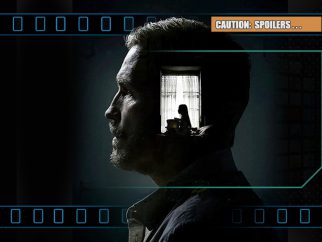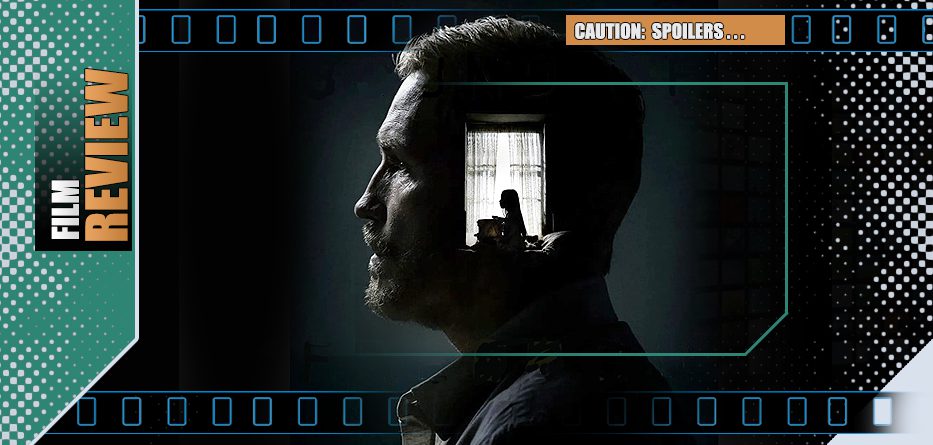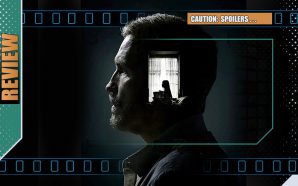Tim Ballard is a member of a Homeland Security trying to make a dent in the sex-traffiking of minors – but a majority of the missions and cases simply take street-level perverts off the street and do little to stop the flow across international borders. Tired of making too little an impact, Ballard gives his boss an ultimatum, either he backs an off-the-books initiative or Ballard leaves the unit and goes… maverick.
Ballard is thinking of a way to bring down the real movers and shakers. With a little help he tries to set up a ‘sex-hotel’ to cater for the paedophiles that travel through the Cartagena area – a front that could actually to save more kids and entrap the perpetrators. But he has a lot of opposition on both sides of the border and any result could come at the cost of his job or his life…
*spoilers*
There are at least two ways to review any production – the content and the intent. In the case of Sound of Freedom they are arguably intertwined in a way that that generates interest but doesn’t help its cause.
If you could walk in, cold, to a screening of the film, devoid of knowing any background factors, caveats or aware of any controversy, you would simply find an over-earnest story – arguably hugely important and relevant in its subject-matter, perhaps genuine in its concern, but a potential water-cooler release ironically weighed down more by its simple stylistic choices and one-note performances than its heavy subject-matter. There are decent production values and some familiar faces on show and enough heart-wringing factors in the mix that you’d likely walk away thinking ‘this is well-intended but flawed‘.
Sound of Freedom desperately wants you to see it as a valiant Narcos or Sicario-level endeavour, looking at the trials, tribulations, compromises and inadequacies of law enforcement stretched thinly across troubled and sometimes fractured borders, situations that lead to exploitation and so many innocent victims. But though it attempts to walk in the similar award-winning, dirty footsteps, it contains few of the actual qualities to follow through on such a mission statement. The subject-matter it seeks to spotlight is sordid, perverted, complex and worthy of both contempt and coverage, but the presentation here quickly reveals itself as coy, over-wrought, simplified to ridiculously inane levels and ends up making Lifetime movies look like Shakespeare. The world of dirty grays is reduced to stark black and white interpretations worthy of 80s straight-to-DVD action (but without the action) offerings and the consequential moments that should anchor the movie are glossed over so as not to offend the very audience it seeks to engage. Inspired by real people they may be, but the film’s ensemble aren’t characters, they’re archetypes: Seedy, greasy, overweight and stupid men sneer, salivate and quite literally twirl their moustaches; cherub-like stolen children sing themselves to sleep through dimly-lit trauma and then dance on the beach after the joy of rescue; heavily-armed manly, mavericky men with permanent three-day stubble – who haven’t cried this much since they bought a Jason Aldean album – look to the horizon and mutter bumper-sticker maxims such as “God’s children are not for sale…” before demonstrating their particular set of Old Testament skills.
Sound of Freedom desperately wants you to see it as a valiant Narcos or Sicario-level endeavour, looking at the trials, tribulations, compromises and inadequacies of law enforcement stretched thinly across troubled and sometimes fractured borders, situations that lead to exploitation and so many innocent victims. But though it attempts to walk in the similar award-winning, dirty footsteps, it contains few of the actual qualities to follow through on such a mission statement…
Jim Caviezel, playing Tim Ballard, is perfect for the film. He’s an actor who often plays minimalist roles – the kind of blank-slate characters of few words and all of them muttered – but definitive actions: a figure with an eternally furrowed brow whose expression and watery-eyed gaze suggests he’s just experienced either the answers to life, the universe and everything or just had a particularly dodgy burrito… and he’s still processing the consequences to both. He was famously Mel Gibson’s choice for the title role in The Passion of the Christ, was great as the bemused and redemptive muscle in the under-appreciated Person of Interest television series and somehow missed being cast as the all-time perfect Batman. If you need someone to portray a Navy SEAL turned Zen master and to stand beside a flag and look off to the far horizon, far more scary when he tries to smile than growl, he’s absolutely, totally your guy. Alongside him are a smattering of familiar faces… Bill Camp (American Rust, Queen’s Gambit, The Outsider) plays ‘Vampiro’, an operative humbled by an earlier encounter with the sex-trade who tries to guide Ballard through the practicalities of taking down the cartels, José Zúñiga (Madam Secretary, The Expanse, Chicago PD) is a distraught father and Yessica Borroto Perryman (Narcos: Mexico) essays one of the traffikers who entices children into her web. Also, inexplicably, Oscar-winner Mira Sorvino appears as Ballard’s wife Katherine, supposedly the real-life Ballard’s rock and reason for doing what he does, but here reduced to a handful of phoned-in lines delivered with the conviction of an infomercial.
But stepping away from the multiplex itself, Sound of Freedom‘s wider controversies go beyond the subject-matter and into more complex territory involving truth, intent and style of marketing… and they’re worth noting in context to the film’s creative force and finished gloss.
All films are marketed to some extent – it’s no casual accident or twist of fate that the disparate Barbie and Oppenheimer became the unlikely must-see duet of the summer. Sound of Freedom – a title genetically engineered to rally patriots everywhere – purports to be a true story, a claim given the side-eye by various other parties who claim that the film’s characters and situations have been distorted. To be completely fair, the ‘inspired by a true story…‘ caveat is a free-range condition of much modern movie-making and the manipulation of facts and streamlining of characters and plot is an accusation you could hurl at numerous productions, big and small. In a David and Goliath setting, where major studios, record labels and publishers have all the money and time to promote, the smaller players often have to work harder and more cleverly to get any of the attention. One way is to generate attention in the form of controversy, where the very act of watching, listening or reading something (or not) becomes a cultural lightning rod. ‘Read the book they don’t want you to read!‘, ‘Listen to this record they’re trying to ban!‘ and ‘Dare you see this movie?‘ become the catnip rallying cry that asks, dares… nay, demands that you show your strength of character by handing over your cash to support their cause. Or not.
While there’s no denying that child sex-traffiking remains a major cause for concern and that scandals like the Jeffrey Epstein case should show how easily power can be used to abuse and hide, Sound of Freedom‘s message seems to be: ‘If you don’t completely support the film, you must support child-sex-traffking‘, a monochromatic complaint that often accompanies productions that want to be able to throw stones at targets but shield themselves from any fallout. Then again, fringe elements on both the Left and Right of public political discourse can likely find something to complain about when it comes to the film and child sex-traffiking does remain a viable source of concern, so scrutiny is everything.
The makers of Sound of Freedom have talked about the way the film was ‘denied’ a release, perhaps by high-up, corrupt forces that didn’t want the film to see the light of day for nefarious reasons. (The film was completed in 2018 and had a distribution deal with 20th Century Fox, but after the studio was acquired by the Walt Disney Company, the film’s release was shelved by Disney and a rights-issue ensued). The delay certainly helped stoke up eventual interest in its mis/fortunes that an on-time release would otherwise have likely seen vanish into obscurity. More abstractly, both Caviezel and Ballard have expressed views about connected traffiking conspiracies also championed by the likes of QAnon. (Beyond the financial aspect of sex-traffiking, the QAnon conspiracy suggests Hollywood and Washington elites – supposedly often Democrats – are involved in covering up their involvement in traffiking, that distributor Wayfair was secretly selling kids instead of furniture and Caviezel echoed in a recent interview that the chemical adrenochrome – a compound produced by the oxidation of adrenaline – is produced by torturing children and could be an incentive to traffikers. Q’Anon have talked about secret elites using the chemical to extend their lifespans, though scientists have repeatedly debunked the idea as pure fantasy, saying it has no rejuvenating properties. Your mileage may vary as to whether such extra comments by the key players help or hinder the central ‘don’t hurt kids!’ message.
The veracity of Ballard’s career has also been addressed and how accurately the film’s simplistic narrative depicts his actions. Asserting his time with the CIA and Homeland Security, Ballard has apparently not given either organisation the right to confirm any details. Certainly, there are some events in the film that did happen – the fact that Ballard quit his Homeland Security job and various sting-operations/raids that he helped set up are not disputed. He’s certainly helped some children escape their horrific ordeals. Beyond that, specifics get somewhat cloudy and his strong religious views become intertwined with highly-profitable self-publicity and business concerns through the years. The rescue organisation he subsequently set up, ‘Operation Underground Railroad’, has faced various allegations about the nature of its activities, criticisms of its approach, the actual size of their triumphs against sex-traffiking and the size of yearly profits (which, in 2020 had a revenue of nearly $50 million).
It is worth noting that as the film’s credits roll, Caviezel appears, as himself, thanking the audience and saying that the film is not about him nor about Ballard, but merely an effort to shed a light on the fact that there are more slaves in the world today than ever before and that a huge amount of them are children. It’s a sobering statistic, one of many the film produces, but as Caviezel finishes his monologue to the faithful, claiming that the film has been released despite all the delays and obstacles in its way and that Sound of Freedom could be the Uncle Tom’s Cabin of its generation, a QR-code appears on the screen. It’s not, as one might half-expect a way to end what has often felt like a long showreel and informercial for the Operation Underground Railroad and to perhaps scan and send a donation to help the OAR organisation… but, strangely, a link to Angel Studios and an encouragement to buy $75 worth of Sound of Freedom box-office tickets that will be ‘paid forward’ so other people can get free tickets to see the film. Not, you understand, simply to increase the film’s box-office numbers and profits (so it could momentarilly compete with the likes of Indiana Jones and Mission Impossible) but merely to spread its gospel (or, in legalise, …”upon receipt may use them at its sole discretion to further Angel Studios’ mission of amplifying light through impactful stories…“)
In a year where movie marketing has been everywhere and in everything, the true Sound of Freedom, it seems, may echo not just in the forlorn cries of lost children but the kerching of cash-registers and crowd-funding, all of which are worthy of our ever-more close scrutiny…

- Story6
- Acting5
- Direction6









